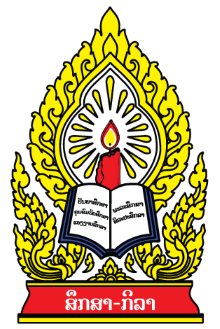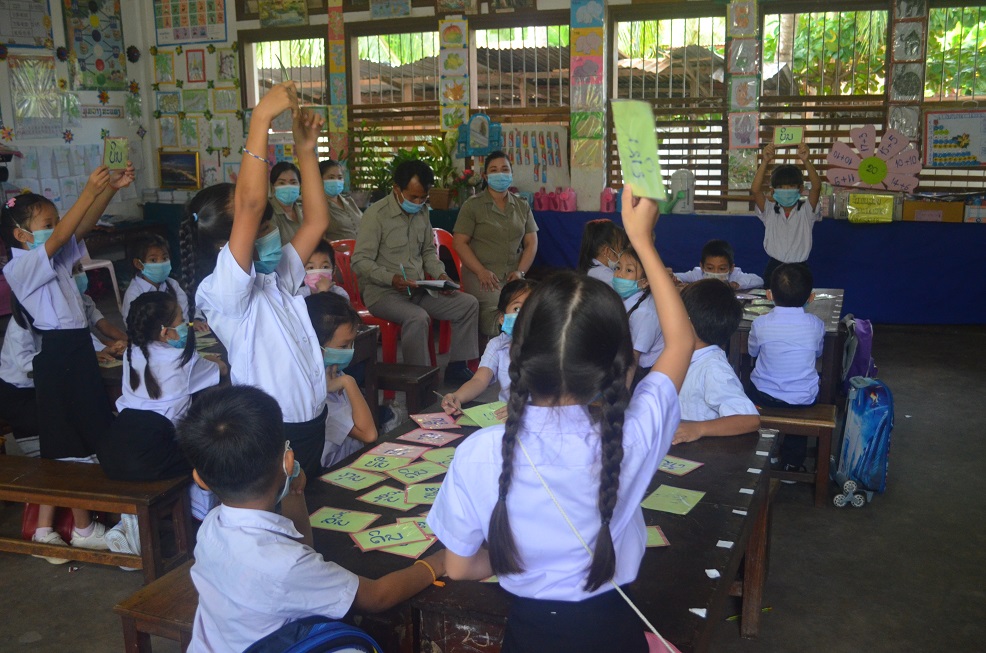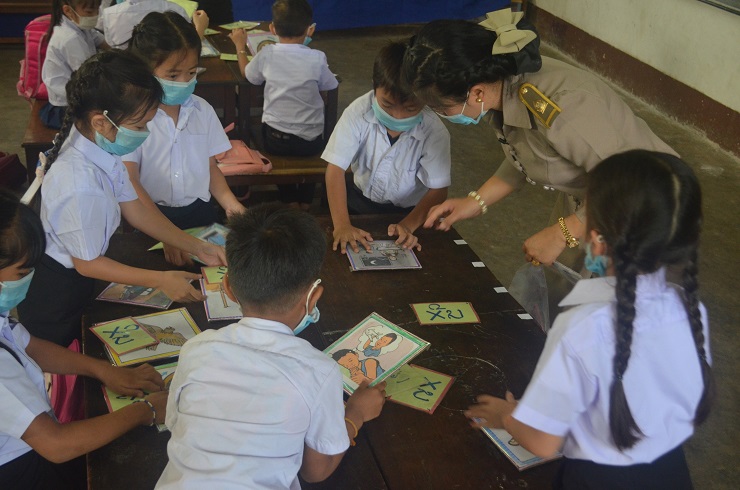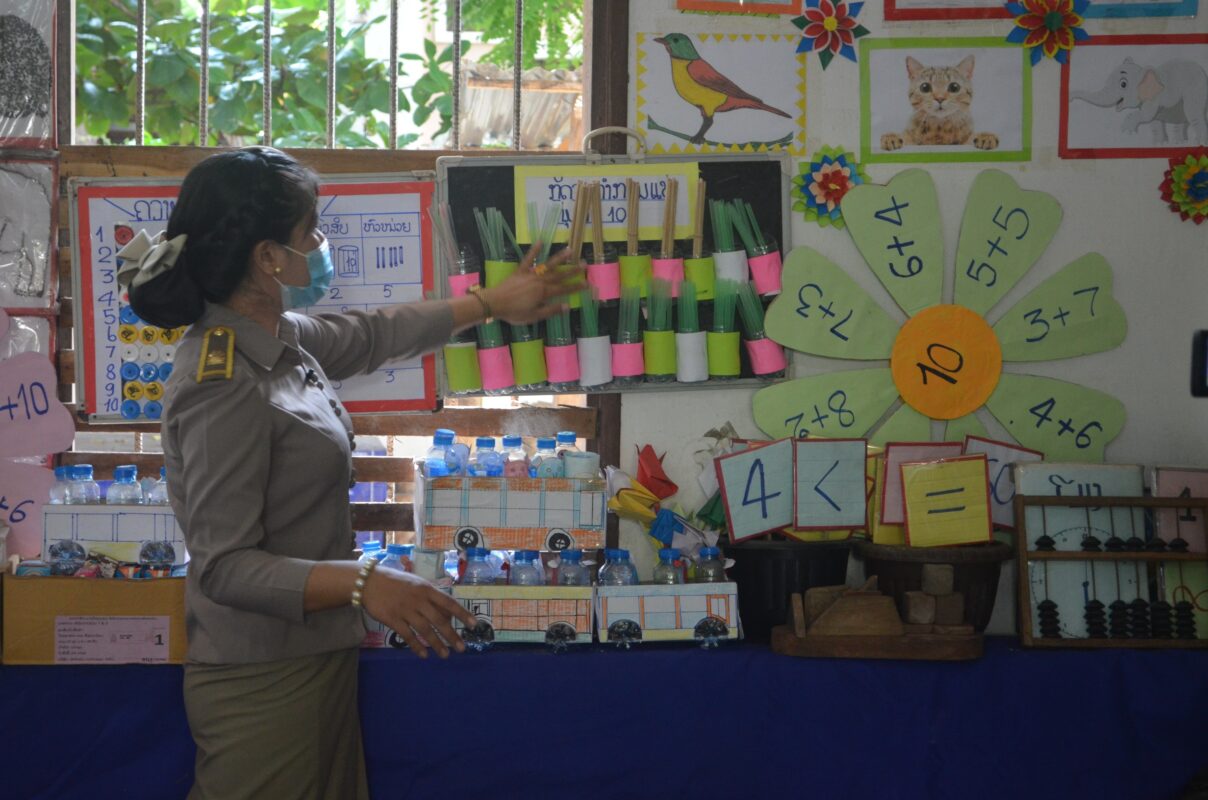This is the first time that the Ministry of Education and Sports has organized a workshop on the implementation of the 9th ESSDP 2021-2025 with participation at central ministry level with support from the Government of Australia
The Ministry of Education and Sports (MoES), with the support of Australia through the BEQUAL program, has developed a new docuseries called “the Role Model series”. The series will be disseminated via TV, radio, newspapers and social media from September 2021. The objective is to promote the work of curriculum implementation role models throughout Laos to encourage others to apply their key best practices in order to boost the successful implementation of the new primary curriculum. The role models could be a teacher, trainer, school principal, head of cluster or district educational staff who shows an exceptional teaching, training or inclusion practice and could inspire others. The docuseries will be dubbed in Lao Sign Language.
The TV, radio and newspaper team from the Information Media Center of MoES went to Luang Prabang from 23 to 27 August with advisors from Government of Australia’s BEQUAL program to interview the first role model. Her name is Mrs Souphaphone Phouthasins and she is a passionate young Grade 1 teacher.
Mrs Souphaphone decided to become a teacher when she was very young, after a dream she had. Her brother-in-law, who is also a teacher, inspired her and supported her. After years of study, her dream became reality, and she is now a well-regarded primary teacher in Luang Prabang Province.
Mrs Souphaphone has been teaching the new curriculum developed by MoES with the support of Australia since it was launched in September 2019. She remembers her excitement when discovering the new Grade 1 textbooks: “they are so colourful and full of pictures; it is very important for young students; it makes learning more attractive and enjoyable!”

She really appreciates the new active learning pedagogy because the children learn better and faster. “I had to adapt my teaching, but the students enjoy learning a lot when they are active and engaged; they are more motivated, they want to stay in school, and they learn more. With the new techniques, the students learn by doing activities. The students have to think for themselves. They observe me first and then they will do the activity. Students can work together in pairs, or independently. I observe them and provide support if needed.”
Mrs Souphaphone is full of energy to make her class more active. “The teacher guides are very helpful as they contain a lot of guidance on activities; for example, if I want to teach some new sounds and letters in Lao Language, I have many games to choose from in the Lao Language teacher guide. I often pick the matching cards game. I show the students cards with the letters; we say the sound together and they can see the letter. Then I will show cards with images of animals or objects starting with the same sound; and I will let the students do the matching.”
She recognizes that one of the challenges with active learning is that you need a lot of resources for the activities. “but this is not a big difficulty; I create them with local or recycled materials; for example, for mathematics I make a car with a card box. Then I decorate empty plastic bottles with a teddy bear face, and I put them in the car. I will ask students to count. They love this because the bottles are cute. I also go in the school courtyard to show trees and plants for sciences. I give them some leaves, they can look at them, touch them, smell them. I let them discuss about their findings. There are so many things you can teach through observation.”
Mrs Souphaphone also stresses that it is important to prepare the classroom to have a setting that will enable all those activities to happen. “I group the tables. With this arrangement it is easier for the students to collaborate, share ideas and do activities together. I have also organized my classroom with 4 corners: 1 for Lao Language, 1 for materials, 1 for handicraft and 1 for reading. It is also important to have decoration and display the work of the students. So, the atmosphere is nice and joyful. And the students feel valued when they see their work on the wall.”
Mrs Souphaphone concluded the interview by encouraging other teachers to read the teacher guides carefully and use the scripted lessons to help them be prepared. “And the most important if a teacher doesn’t understand a technique or doesn’t know how to do, they should share their problem; they should contact other teachers, or the principal. I am well known in the region. Teachers from other schools come to me and I am always very happy to support, to share my lesson plan. They come co-teaching in my class and observe me.”
When you see the smiles on the faces of the young Grade 1 students of Mrs Souphaphone when they enter the classroom in the morning, you know those students will enjoy their day; you know they will listen and learn; you know how a passionate teacher can make a huge impact on the education and the future of the new generation.




 ພາສາລາວ
ພາສາລາວ



